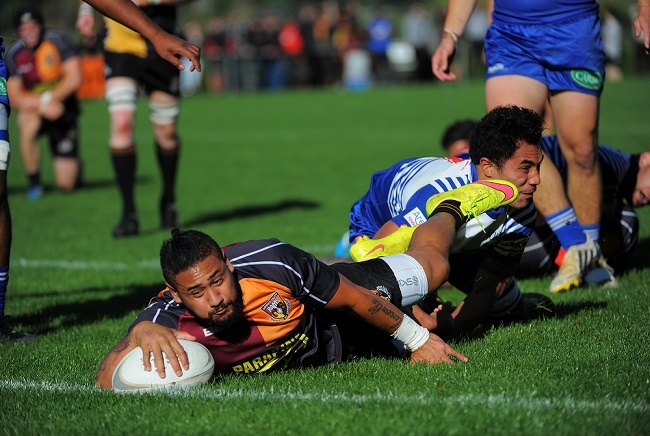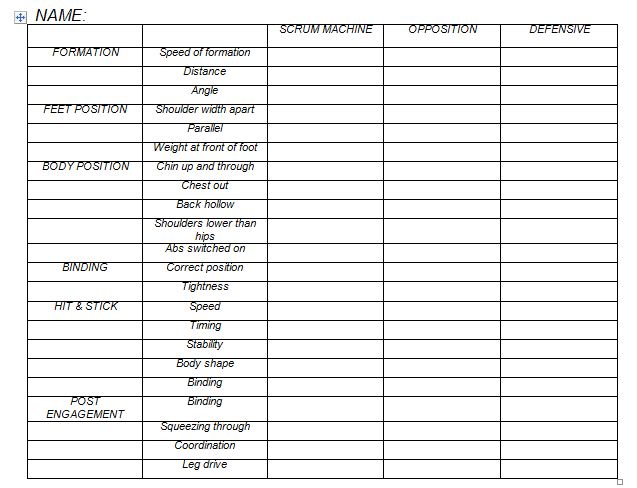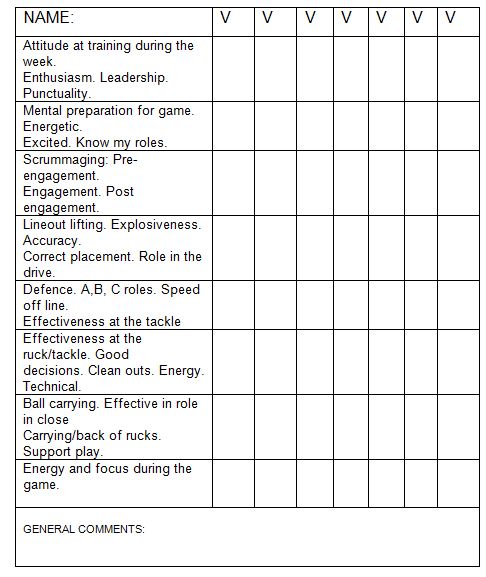- Rugby Toolbox
- Resources & Education
- Learn more
- Articles
- Snook on Coaching
- Monitoring the Progress
- Ruck & Run Drill
- Playing Philosophy – Ruck & Run Coaching Components
- Playing Philosophy – Spread the Forwards
- Playing Philosophy – A forward behind the ruck
- Playing Philosophy – Ruck & Run
- Playing Philosophy – An idea!
- The Breakdown
- Building Positivity [3]
- Building Positivity [2]
- Building Positivity
- Fitness and Game Related Activities
- Getting the Head Working
- Missiles are Dangerous
- Use of Video
- Winger Attacking Outside First-Five
- Player Profiling
- Selection
- Fitness Away from the Team Session
- Playing Philosophy (Pre season Prep)
- Coaching the Coaches
- The Rugby Coordinator and Pre-Season Preparation
- Why Not Use Tap Penalties More Often?
- Why Kick the Ball Down the Middle of the Field?
- Defending the 5 Metre Lineout Drive
- Scoring from the 5 Metre Lineout
- What are the Kicking Team Aiming to Achieve from Halfway Restart
- Should We Practice Scoring Tries?
- Team Culture
- Looking After Your Players
- Coach Survival Tips
- Under 11/13 – Backline Defence
- Under 11/13 – Ruck Defence
- Under 11/13 – Back Attack
- Under 13 – The Counter Attack
- Under 11/13 – The Maul
- Under 11/13 – Lineouts
- Under 11/13 – Decision Making
- Under 11/13 – Support Play
- Under 11/13 – Dive Pass and More
- Under 11/13 – Drop & Grubber Kick /Highball Catch
- Under 11/13 – Front on Tackling
- Under 11/13 – Contact – Getting Up – The Ruck
- Under 11/13 – The Coaching Session
- Under 8/10 – Using Space
- Under 8/10 – Kicking
- Under 8/10 – Contact and Picking Up the Ball
- U8/U10 Draw & Pass and Sidestep
- Under 8/10 – The Tackle
- Under 8/10 – The Coaching Session
- Under 7 – Test Your Coaching – Support Play
- Tap Pass and Swerve U7
- Ball Familiarisation; Passing & Receiving
- Activities for the Non-Contact Tackle
- Under 7 – The Coaching Session
- Coaching Teenagers – After the Ruck
- Coaching Teenagers – The Practice Session
- Coaching Teenagers – Best Practice
- Coaching Kids – Best Practice
- Plays from a Tap Penalty
- Running Plays from a 5 Man Lineout
- Driving Plays from a 5 Man Lineout
- Strike Plays at the End of the Lineout
- Back Strike Plays at the Lineout
- Wide Strike at the Scrum (2)
- Wide Strike at the Scrum
- Midfield Attack at the Scrum
- No 8 Plays at the Scrum (2)
- No 8 Plays at the Scrum
- The Cut Out Pass
- Skills to Penetrate (2)
- Skills to Penetrate
- Movements to Penetrate
- Patterns to Penetrate
- Contact and Continuity
- Keeping the Ball Alive Out Wide
- Pre Season Support Activities
- Checklist
- Understanding the game
- The Playing Philosophy
- The Lineout
- Overview
- Team Profile
- Start Now!
- Backrow
- Nine and Ten
- Rugby-related Fitness Activities
- The Psychological Edge
- Open Field Play
- Key Performance Indicators
- Improving Team Performance
- Backline Attack Concepts
- Tactics at Phase Play
- Playing Philosophy
- The ‘Stop Focus’
- Kick Attack
- Clearing the 22
- Wide Attack at Phase
- Player Focus
- Scrum Preparation
- Lineout Preparation
- Back Attack Preparation
- Sevens Preparation
- Sevens Kick Offs
- Sevens Scrum and Lineout
- Sevens Attack Patterns
- Sevens Defence
- 7's Selection and Game Planning
- Coaching and Leadership
- How the Game Evolves
- Changing Within the Game
- Learning from the Television.
- Using Tap Penalties Wisely
- Defence Drills
- Defence Drills for Tight Five
- Team Defence and TUB’ing
- Establishing Patterns from the Ruck
- Structured Phase Play
- Structuring Phase Play on the Run
- Coaching Roles
- Structuring a Close in Tackling/Defensive Session
- Coaching in Threes
- Attacking Back Play
- Kick Off Chase
- Wrap Around Back Plays
- Lineout Plans
- Looking and Learning
- Motivating Your Players
- Scrum Attack
- Refocusing the Team
- Monitoring the Progress
- Learning the Game
- Playing to the Laws
- Small is OK
- Decisions After the Tackle
- Improving Your Coaching
- Food for Thought
- More Food for Thought
- Passing & Catching
- How Ireland Nearly Beat the All Blacks
- The Progressive Coach
- Try Something New
- Encouraging Excitement
- The Mental Approach
- Where to Start
- Being the Best You Can Be
- Off the Ball Decisions
- Lineouts Difficult to Master
- Decisions on the Run
- Rucking and Rolling
- A Successful Approach
- Gaining Clarity
- Manipulation vs Physicality
- Beating the Drift
- To Ruck or Not to Ruck
- Stopping the Lineout Drive
- Fine Tuning the Planning
- It's a Running Game
- RugbySmart 2015
- Using the Shoulders
- Loosehead Prop / Tighthead Prop
- Position Specific – Hooker
- Position Specific – Lock
- Position Specific – Blindside Flanker
- Position Specific – Openside Flanker
- Position Specific – No 8
- Position Specific – Halfback
- Position Specific – First Five Eighth
- Position Specific – Second Five Eighth
- Position Specific – Centre Three-quarter
- Position Specific – Wing
- Position Specific – Fullback
Monitoring the Progress

If you have taken the time to have a meeting with your team and set a plan in place to refocus the group on what lies ahead and how to get there, then it is a good idea to monitor their progress along the way to keep things on track.
 This does not have to be a difficult or lengthy process and can take the form of charts or graphs that can be filled in by the coach and quickly discussed with the player, or filled in together whenever time allows.
This does not have to be a difficult or lengthy process and can take the form of charts or graphs that can be filled in by the coach and quickly discussed with the player, or filled in together whenever time allows.
The obvious idea would be to use the aspects of play that have been the main target areas when you have been refocusing the game plan.
As an example you might get a player to fill in a sheet something similar to this following a scrummaging session on the machine and against another pack.

You might produce a much smaller card based on the several key things that you want to achieve. Once you start discussing the main points then the technical aspects will come to the fore. You may like to include the backrow plays aspect of the scrummaging so just add or delete as you wish.
Just how you mark this sheet is up to you. You may put a mark out of 10 in each column or you may just put a comment. You might even make a bar graph so that the players can compare their results. The whole idea is to have a check list to aid with further improvements.
The key technical aspects can be found in ‘The Coaching Toolbox’.
As an alternative idea the coach can get each player to set out his own goals for the upcoming matches.
The player will list the goals/aims down the side of the sheet and then give himself a mark out of 10 at the end of each week (prior to the first practice of the next week)

If you can get your players to do something along these lines it will help retain their focus during the season and provide a guideline as to how they can improve.
The coach will need to monitor this strenuously if it is to be effective. Good luck.